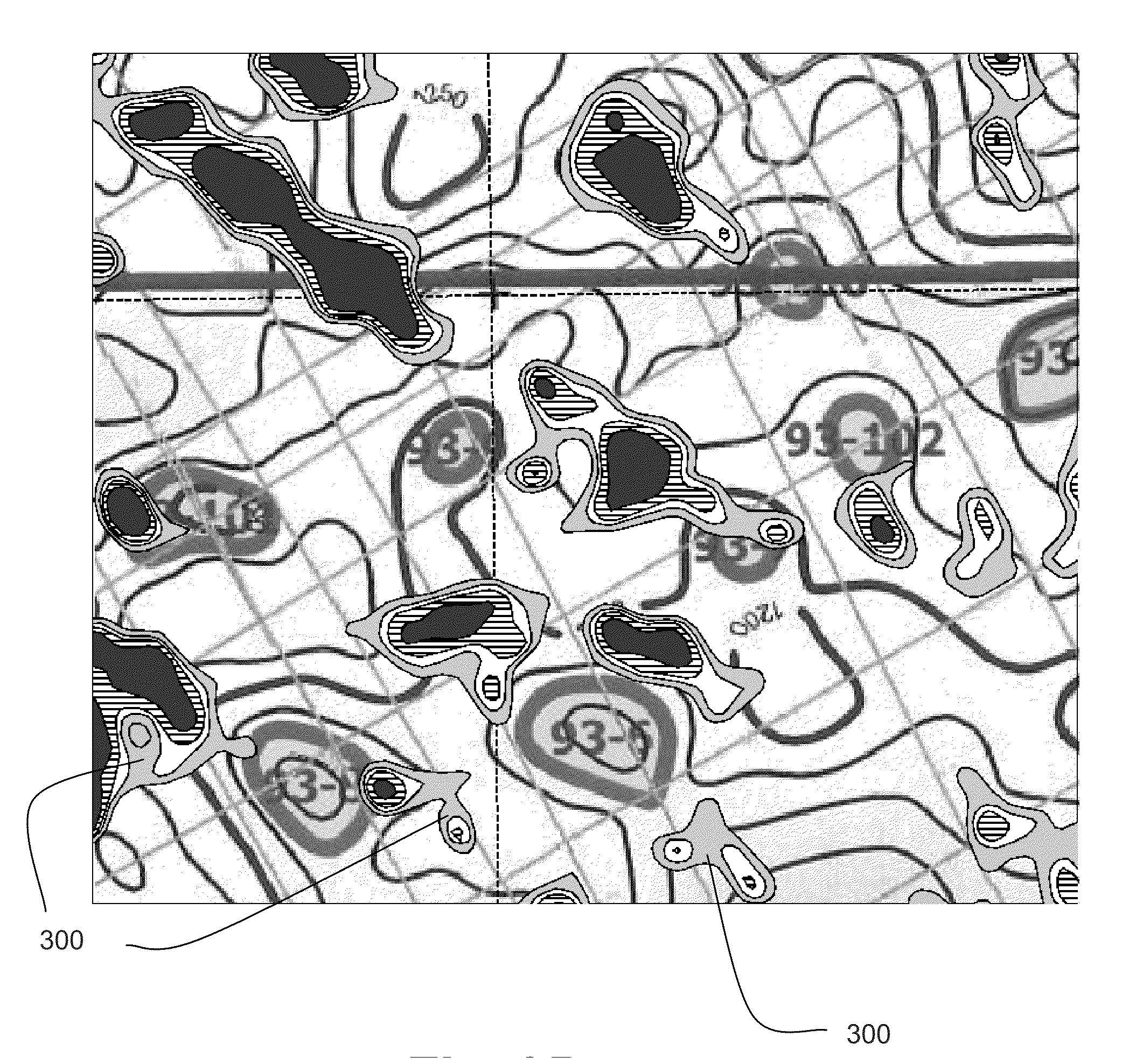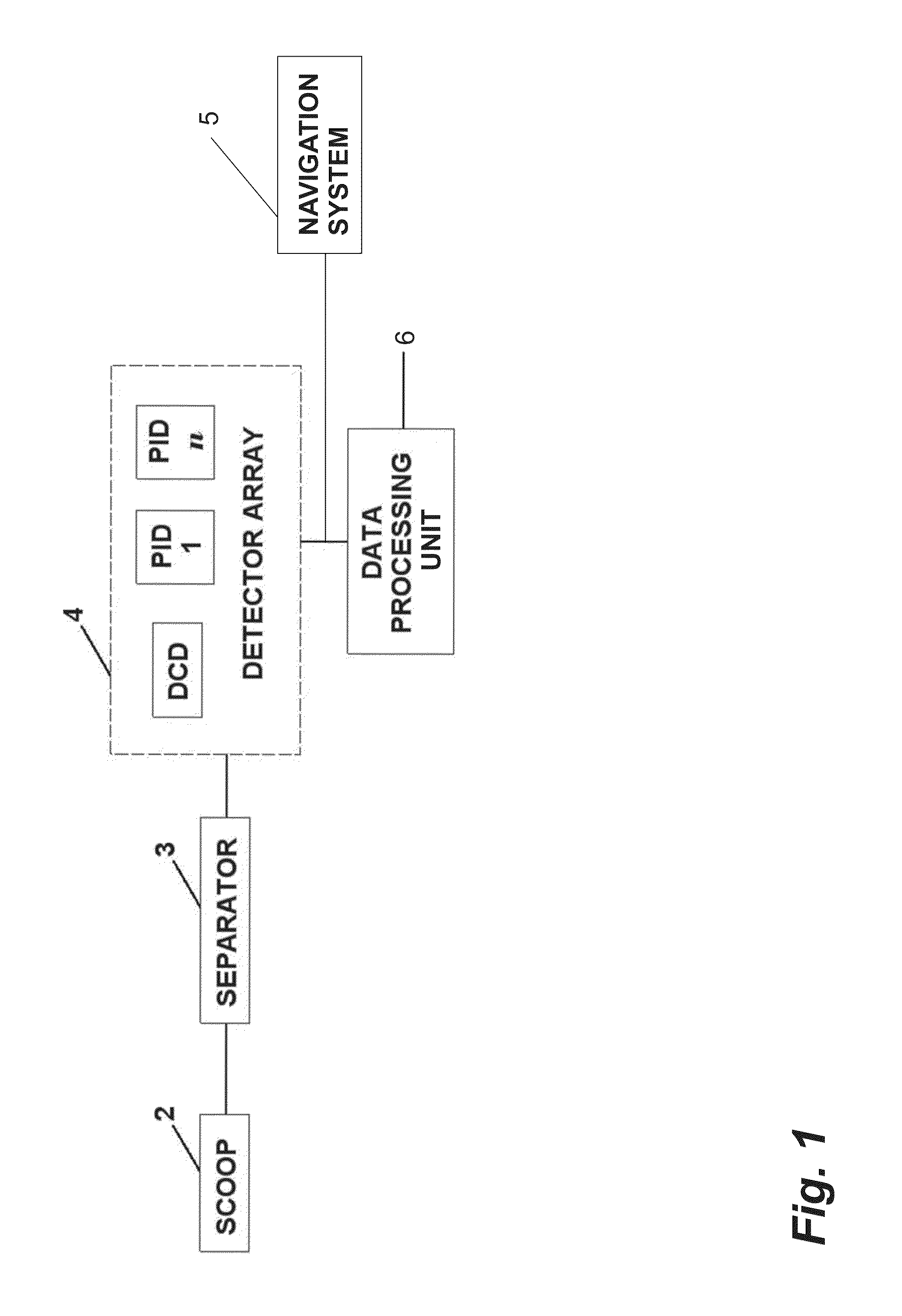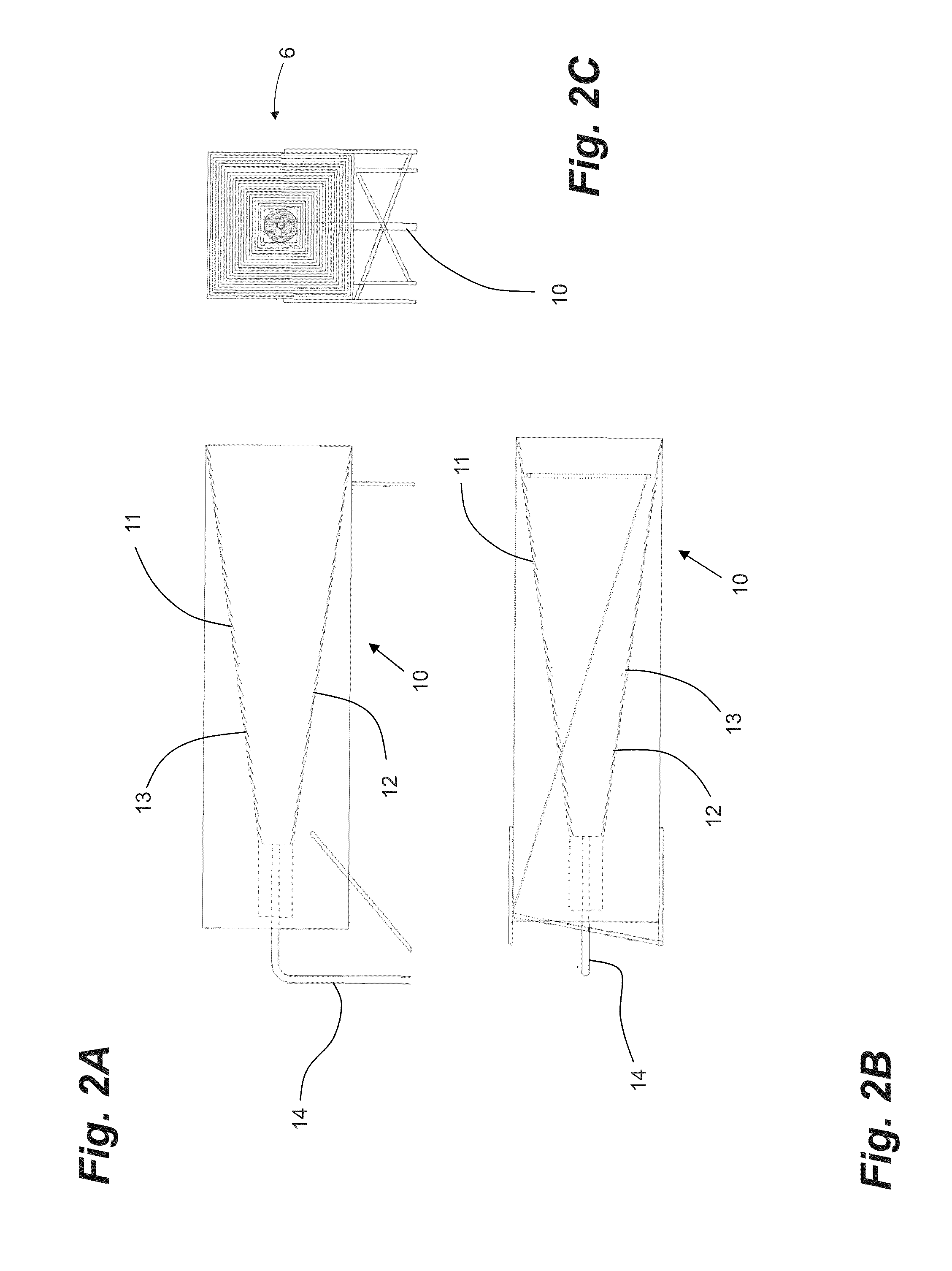Method and apparatus for detection of hydrocarbon deposits
a hydrocarbon deposit and hydrocarbon technology, applied in the field of methods, can solve the problems of errors and inability to assist in characterization
- Summary
- Abstract
- Description
- Claims
- Application Information
AI Technical Summary
Benefits of technology
Problems solved by technology
Method used
Image
Examples
example 1
[0090]A survey was conducted in South Australia. The results are shown in FIGS. 9A-13. The aircraft 15 used was a twin engine, low wing Piper Navajo. The scoop 2 was located on the top of the fuselage of the aircraft forward of the engine. The aircraft was flown 100 meters above the terrain. The line spacing between the flight lines was 1 km. A section of the flight plan (two-dimensional grid) is illustrated in FIG. 5A of the accompanying drawings. The average flight parameters were as follows:[0091]Speed of the aircraft 282.0 km / hr[0092]Wind speed 20.5 km / hr[0093]Ground speed 280.5 km / hr[0094]Total flying time 9 hr 58 min
[0095]The air samples were collected by the scoop illustrated by FIGS. 2A, 2B and 2C of the accompanying drawings and the amount of methane ions and propane ions were detected by the detectors at 1 second intervals. A DCD detector was used to detect the methane ions. A photoionisation detector was used to detect the propane ions. The total number of hydrocarbon ion...
example 2
[0113]The same steps described in Example 1 were repeated except that the one of the higher order hydrocarbon ions, in addition to propane ions, was detected using a third detector. The third detector used was a photoionisation detector and it was used to detect pentane ions. The data was analyzed to obtain pentane footprints. With reference to FIGS. 11A and 11B, respectively, the pentane footprints are superimposed on the flight plan of FIG. 5A and superimposed on the geological map of the subsurface formation.
[0114]According to another embodiment of the invention the detector array detects either methane ions or at least one higher order hydrocarbon ions.
[0115]The higher order hydrocarbons present in the collected air samples are propane or butane or pentane or hexane or mixtures thereof.
PUM
 Login to View More
Login to View More Abstract
Description
Claims
Application Information
 Login to View More
Login to View More - R&D
- Intellectual Property
- Life Sciences
- Materials
- Tech Scout
- Unparalleled Data Quality
- Higher Quality Content
- 60% Fewer Hallucinations
Browse by: Latest US Patents, China's latest patents, Technical Efficacy Thesaurus, Application Domain, Technology Topic, Popular Technical Reports.
© 2025 PatSnap. All rights reserved.Legal|Privacy policy|Modern Slavery Act Transparency Statement|Sitemap|About US| Contact US: help@patsnap.com



